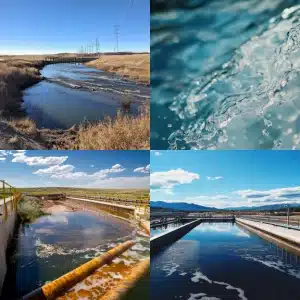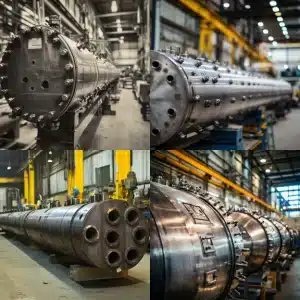
What is corrosion failure analysis helps identify why corrosion occurs in metal structures and pressure vessels, using corrosion detection and a material failure analysis process to prevent costly failures. Early analysis and preventive strategies extend equipment lifespan, improve safety, and reduce maintenance costs.
Why What Is Corrosion Failure Analysis Matters
Corrosion can quietly weaken your metal structures until they become unsafe or inefficient. A 2020 study by NACE International found that corrosion costs the global economy nearly $2.5 trillion each year (NACE International). Good news: by focusing on corrosion failure analysis, and implementing corrosion detection techniques, you can spot warning signs early and keep your pressure vessels in solid shape. This approach is part of a broader material failure analysis process, which uncovers how various factors harm metal or alloy components. You will see how it protects your operations, extends the life of your assets, and boosts overall safety. Below, you will learn what is corrosion failure analysis, why corrosion failure analysis matters, how it works, and tips you can apply right now.
Why What is Corrosion Failure Analysis Matters
Corrosion failure analysis helps you figure out exactly why corrosion is taking place on your equipment. It goes beyond surface-level inspections and explores the mechanisms behind rust, pitting, cracking, or leaks. If you manage pressure vessels and wonder what causes pressure vessel failure, corrosion is often one of the top culprits. By getting to the root cause through a structured analysis, you can address the issue before it becomes severe.
When you invest in corrosion failure analysis and implement corrosion detection techniques, you set the stage for data-driven improvements. You might discover that your system uses a metal not fully compatible with the fluid it carries, or that untreated salts in the water supply are speeding up corrosion. Once these details come to light, you can switch metals, adjust coatings, or change operating conditions. At Red River LLC, the team builds on similar insights to deliver reliable designs in prefabricated modules, which reduce the chance of corrosion surprises on-site. Your best defense starts with knowing how and why your metals degrade.
Common Causes of Corrosion in Pressure Vessels
To understand the “why” behind corrosion, it helps to think about the factors that lead to metal degradation. Corrosion typically happens when metal reacts with oxygen, moisture, or chemicals, forming oxides or other compounds. In a pressurized environment, this reaction can speed up due to high temperatures or fluid turbulence. Here are some leading causes:
Chemical Exposure
Many industrial fluids contain acids or salts that corrode metal surfaces over time. Even minor contamination can trigger steady metal decay.
Temperature and Pressure Fluctuations
Repeated heating and cooling cycles expand and contract metal. Over time, microscopic cracks appear, which let corrosive agents slip in and create localized damage.
Poor Material Selection
Sometimes, a vessel is constructed from metal that cannot handle the specific environment or fluid chemistry. That mismatch leads to faster corrosion rates and eventual structural concerns.
Stagnant Fluids
When liquids do not move, corrosive byproducts tend to build up on the metal. This can accelerate pitting, a nightmare for vessel integrity.
Sifting through these triggers is a key part of any pressure vessel failure analysis. You also combine other specialized evaluations, such as mechanical failure analysis, to get a full picture of how your system behaves under stressors.
Steps to Conduct a Thorough Analysis
If you already suspect corrosion or see suspicious discoloration, it is wise to launch a corrosion failure analysis to assess metal degradation. This process has some universal steps to ensure that your data is accurate and your solutions are relevant:
Visual Inspection
You begin with a surface check. Look for rust stains, bubbling paint, or any unusual coloring on your pressure vessel. Document everything with photos.
Non-destructive Testing (NDT)
Techniques like ultrasonic thickness measurement or radiographic imaging reveal hidden damage.
Material Sampling and Lab Tests
In some cases, you remove a small metal sample for microscopic or chemical examination. A lab can identify the type of corrosion (pitting, intergranular, or stress-corrosion cracking) and trace it back to specific conditions.
Data Interpretation
Once you have the results, you correlate them with your vessel’s operating environment. Did certain temperature spikes coincide with more pitting? Is the fluid composition more acidic than you realized? These correlations guide your next steps.
Solution development
Fixes may include changing metal grades, adding liners or protective coatings, adjusting operating temperatures, or treatment systems.
If you want a detailed guide, see how pros get vessel quotes fast.
Practical Ways to Prevent Corrosion
Knowing how to handle corrosion after the fact is useful, but prevention is the real lifesaver. Here are several corrosion failure analysis steps and strategies that keep your metal assets strong:
Select the Right Materials
Not all alloys are equal. Investigate which options handle your operating conditions well. Red River LLC, for example, focuses on choosing the metals and linings best suited for a client’s flow rate, fluid chemistry, and temperature.
Apply Protective Coatings
Epoxy or specialty polymer coatings act as a barrier between metal and corrosive elements. Combined with good surface prep, these coatings significantly reduce rust and pitting.
Use Cathodic Protection
This method attaches sacrificial anodes or applies an electrical current to prevent the primary metal from corroding. It is common in underground or underwater piping but works for certain vessels too.
Control Your Environment
Adjust pH levels, remove oxygen, or filter out corrosive chemicals in your system. Small tweaks in fluid chemistry often pay large dividends in extended equipment life.
Schedule Consistent Inspections
Routine checkups let you stay ahead of potential trouble spots. Fitting any facility with thorough monitoring, as Red River LLC does during prefabrication, helps you evaluate corrosion risk before install. You might also consider extended checks after startup to confirm that protective measures are truly working.
When these corrosion failure analysis steps are woven into your regular maintenance plan, you reduce both downtime and unexpected repair costs. A strong prevention strategy also protects against other potential breakdowns, such as common pressure vessel failures.
What Is Corrosion Failure Analysis Means for You
What is corrosion failure analysis is more than a diagnostic is your chance to refine how you handle metal-based systems. Corrosion can eat away at your equipment’s reliability and performance, but a structured analysis uncovers why the problem exists and how to remedy it. Whether you rely on Red River LLC to build robust modules or manage your own pressure vessel maintenance, analyzing corrosion sets you up for safer and more efficient operations. You will extend equipment lifespan, support better return on investment, and make worry-free decisions about your day-to-day processes.
Once you know where corrosion lurks, you can swap out vulnerable components, add specialized coatings, or switch materials entirely. It comes down to having the right data at your fingertips. By detecting early signs of decay, you also sidestep catastrophic failures that could put workers, budgets, and reputations at risk. From a simple paint test to an in-depth lab analysis, corrosion failure analysis is your smart route to preserving every ounce of your system’s strength.
Protect Your Equipment with Expert Help
Ready to minimize risks and maximize pressure vessel lifespan? Partner with Red River LLC to safeguard your operations.
Frequently Asked Questions
1. How to perform corrosion failure analysis?
To perform corrosion failure analysis, experts examine the corroded material, identify corrosion types, analyze environmental and operational factors, and use laboratory tests to determine the root cause.
2. Why is corrosion failure analysis important?
Corrosion failure analysis is important because it helps prevent unexpected equipment breakdowns, reduces maintenance costs, and ensures the safety and longevity of structures.
3. Does regular maintenance replace the need for a full analysis?
Routine upkeep helps, but it does not replace a thorough audit. Maintenance may miss nuanced corrosion types like stress-corrosion cracking. A detailed analysis gives you a full picture of hidden damage.
4. When should you call a professional for help?
If you notice unusual discoloration, pressure drops, or leaks, it is time for expert help. Early detection can prevent extensive metal damage and potential shutdowns.
5. How frequent should corrosion checks be?
You can set intervals based on your vessel’s risk profile. Facilities operating at extreme temperatures or with highly corrosive fluids should schedule checks more often, sometimes twice a year or more.
6. Can you prevent corrosion without changing materials?
Yes. Sometimes, modifying fluid chemistry or adding a suitable coating can substantially slow corrosion. Some setups also use cathodic protection to keep corrosion in check.
7. What is the cost of ignoring corrosion?
The cost can be huge, from partial shutdowns to total equipment failure or safety incidents. Early analysis and prevention measures almost always cost less than dealing with catastrophic damage later.
Key Takeaways
- Identifying corrosion early extends the lifespan of your equipment and avoids costly repairs.
- Evaluating factors like chemistry, heat, and material choice reveals why corrosion happens.
- Using thorough inspections, material testing, and data analysis guides precise fixes.
- Preventing corrosion is cheaper and safer than fixing extensive rust or cracks later.
- Partnering with experts, such as Red River LLC, ensures your pressure vessels are designed to reduce risk and maintain efficiency.




